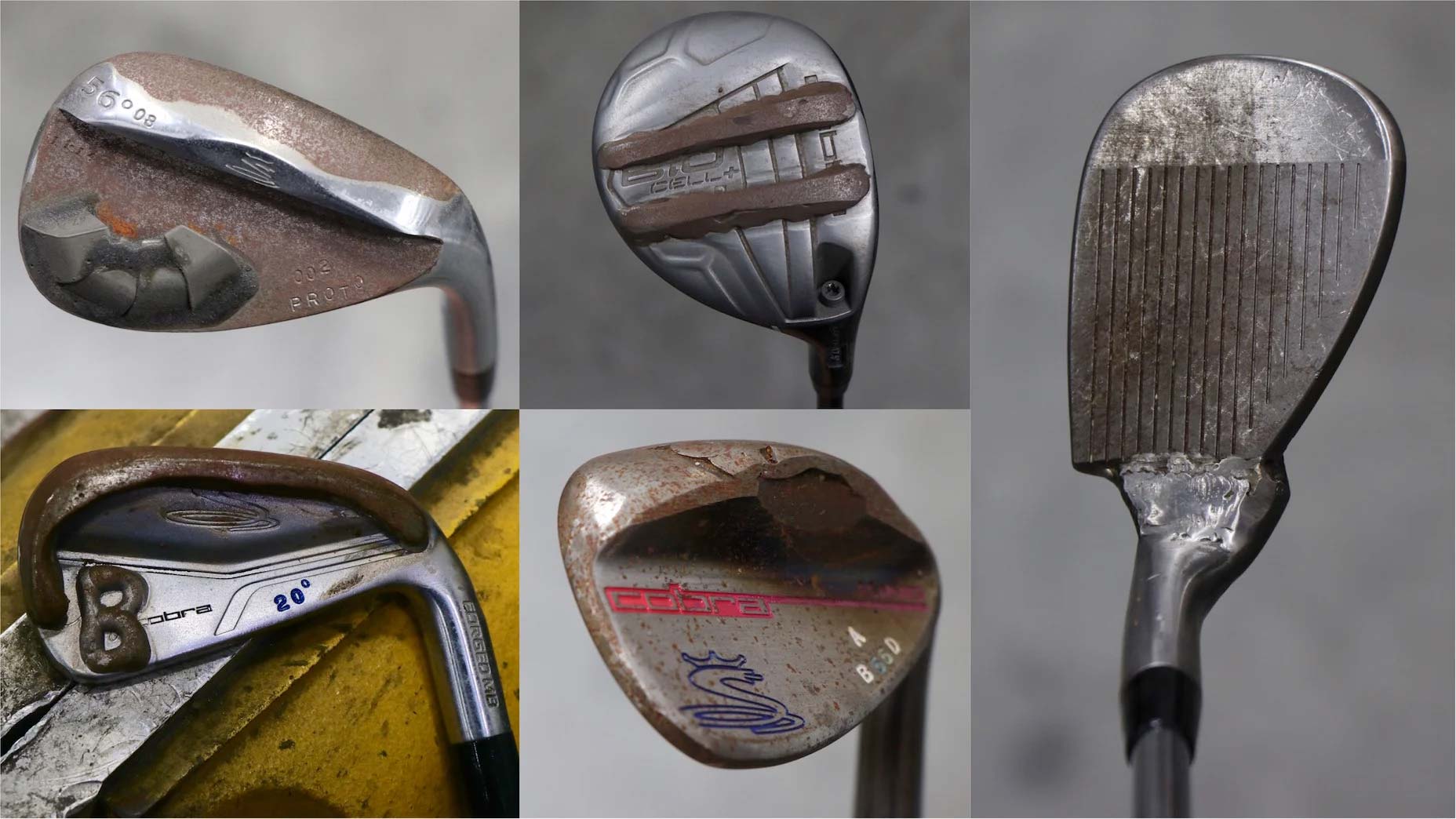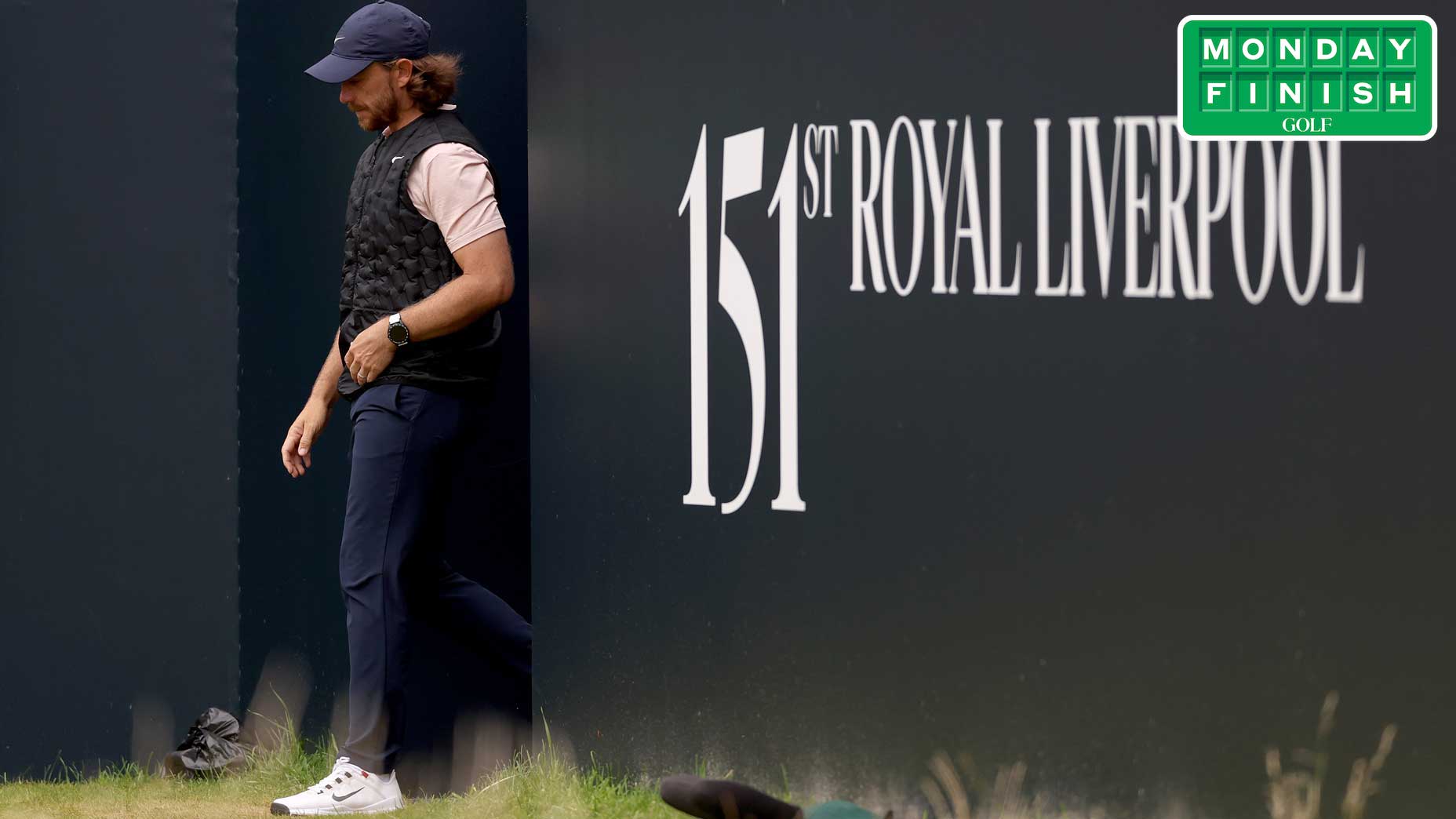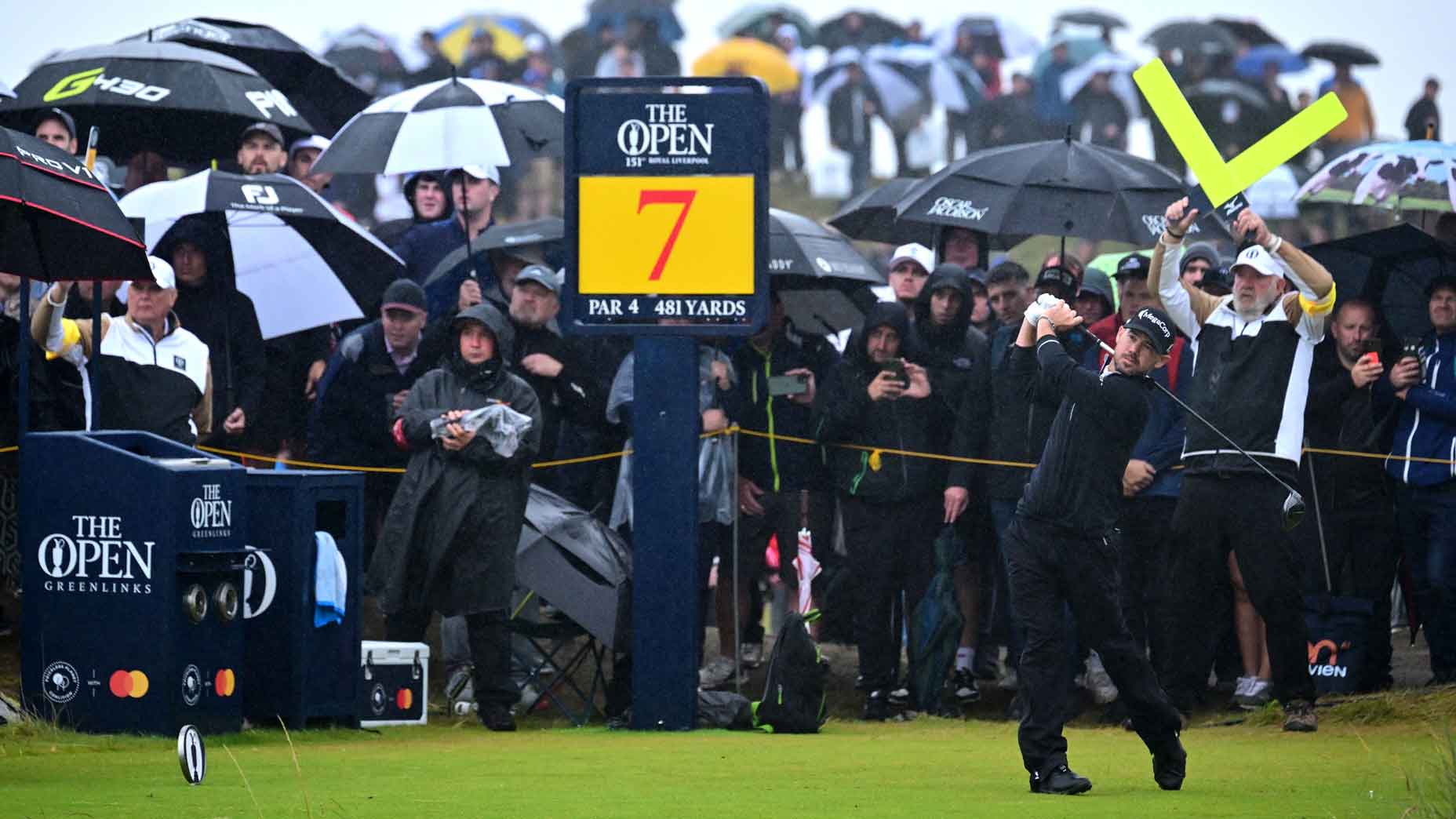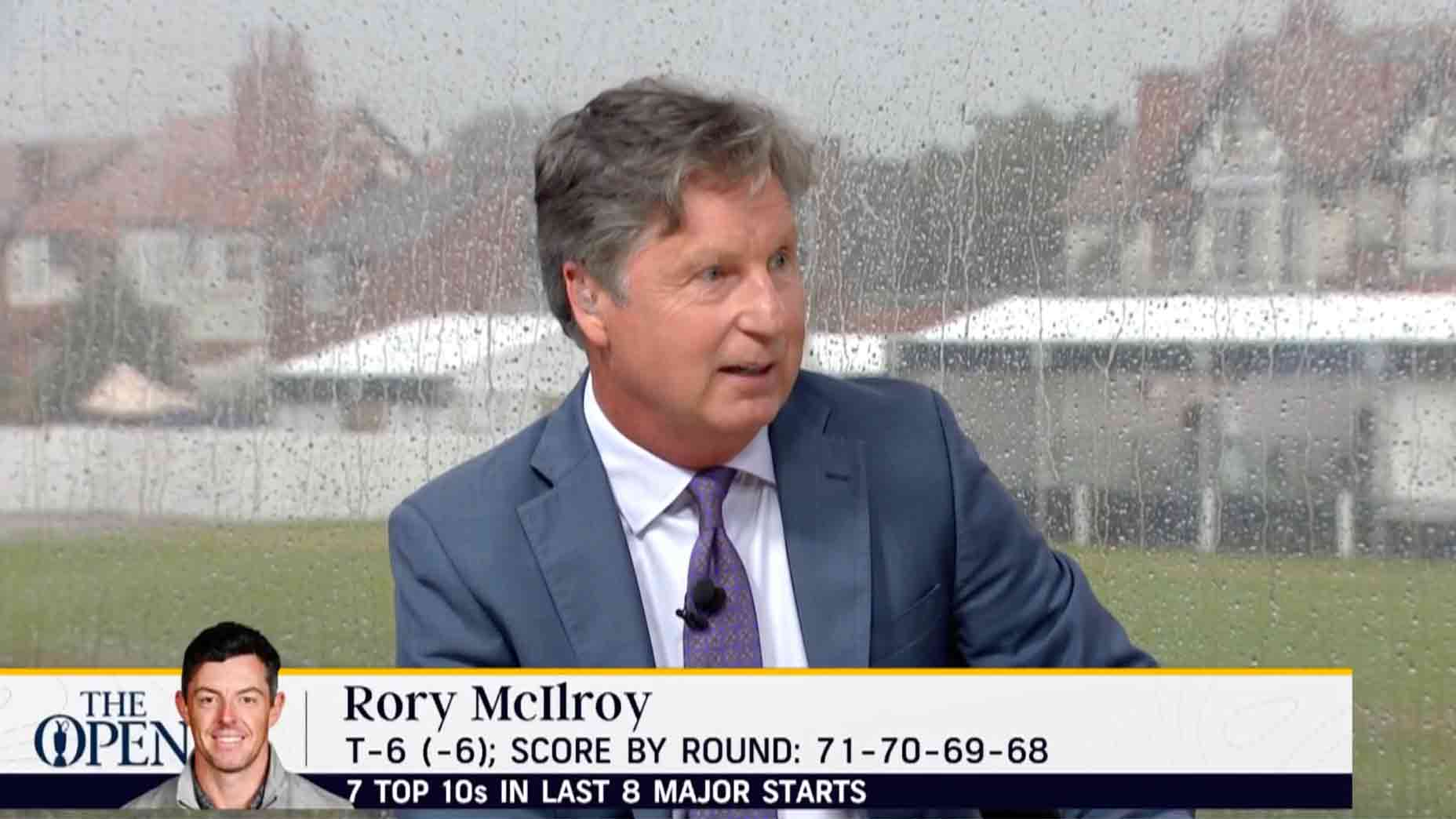Three words. That’s all it took on Thursday to put Bryson DeChambeau’s King Radspeed driver and equipment manufacturer, Cobra Golf, squarely in the spotlight at the 149th Open Championship.
For an equipment manufacturer that’s continually labored to arm DeChambeau with the best possible clubs for his game — creating custom single-length irons and prototype 2-woods — DeChambeau’s harsh assessment of his driver was as surprising as it was salty. He later apologized, saying that “he sucked, not my equipment,” and that his words were born out of frustration.
All else aside, the truth is that building a driver for DeChambeau is anything but conventional when you’re dealing with ball speeds in excess of 210 mph.
Speed is a good thing when you’re trying to generate game-changing distance off the tee, and regular speed training sessions have helped DeChambeau figure out an important part of the distance equation. It’s the accuracy and preferred shot shape (a draw in DeChambeau’s case) that have been difficult to solve.
Simply put, Cobra is in uncharted territory trying to answer design questions on the fly that they never had to consider until two years ago when DeChambeau began the march to increase his ball speed from 170-175 mph to upward of 200 mph.
“As Bryson told us he was going to get faster and stronger, we were like, ‘OK,’” said Tom Olsavsky, Cobra Golf’s vice president of research and design. “Then I started thinking about it and the problems that could create. One problem is, you’re going to cave in faces. Our Tour-designed speeds are 125 miles per hour swing speed; we test a lot there and are good there. Now [Bryson’s] at almost 140 or 145, we’re not so good there. So we have to do things like the materials, welds, face thicknesses — all those things have to be adjusted. We’re always learning and adjusting.”
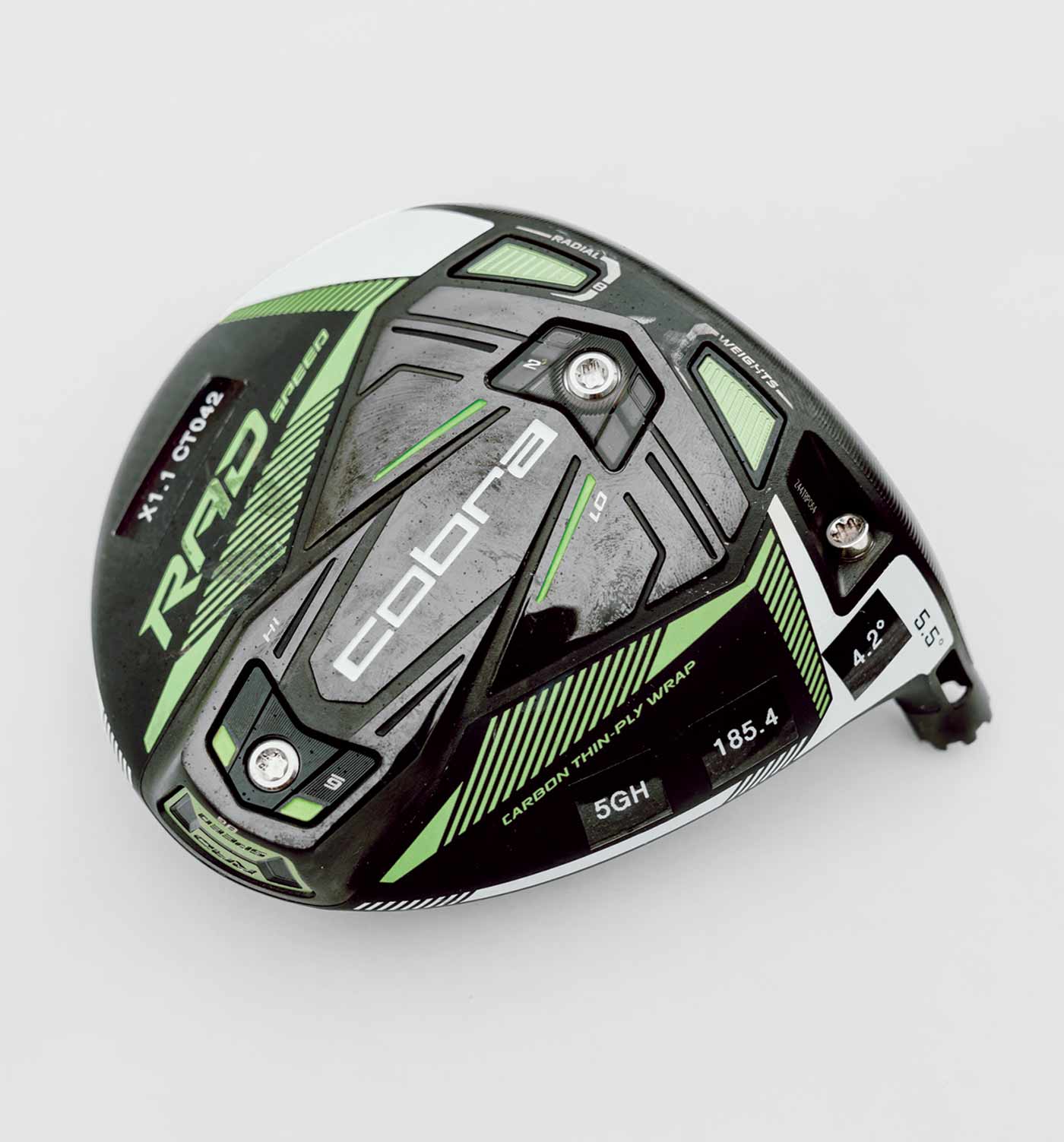
Even when you’re one of the smartest guys in the room — and Olsavsky is without question one of the brightest minds in the industry — there comes a point where driver wants and needs just aren’t feasible.
Dig into the science and you find that the driver formula DeChambeau is trying to attain borders on perfection. It doesn’t mean it can’t be achieved, but it’s important to highlight the difficulties in conjuring a design that checks every box.
For starters, DeChambeau was quoted as saying he still didn’t know “how to make [the driver] good on the mis-hits. I’m living on the razor’s edge like I’ve told people for a long time.”
The “razor’s edge” comment is accurate. According to data sourced from Cobra, DeChambeau not only needs to be more accurate — upward of 20 percent in some cases — at, say, 321 yards to keep it on the same line as a golfer hitting it 270 yards, but he also needs to somehow find a way to maintain his launch and spin numbers at the same time. Generating increased torque naturally creates more gear effect and increases dispersion, lowering the chances of hitting it in the same place at higher speeds.
To achieve the same torque at 140 mph as a drive that misses 15 millimeters from the center position at 115 mph, DeChambeau would need to be at 12 millimeters, which is, again, a 20 percent improvement. In layman’s terms, DeChambeau needs to be significantly better directionally and more accurate to keep from compounding his mishits by mere millimeters — all while swinging at over 140 mph.
In other words, being able to consistently “make [the driver] good on mis-hits” is arguably the tallest order in golf at his speeds. But it ultimately comes down to DeChambeau’s swing, not the construction of the driver.
The laws of physics aren’t in his favor, either, particularly when it comes to drawing the ball. At DeChambeau’s speeds, he generates a higher dynamic loft — around 18 to 20 degrees (the Tour average is 15 degrees) — which in turn creates more spin. To maintain spin, Cobra created a 5.5-degree Radspeed head that could be lofted down to 4 degrees to generate lower spin.
The design sounds like a winner on paper, but here’s the problem: lower spin reduces lift, and reducing lift makes it difficult to turn the ball over. In DeChambeau’s case, trying to hit it off the toe and generate a draw at lower spin rates simply hasn’t been done before. A draw could be accomplished by doing the opposite, increasing spin to make it easier to hit his preferred shot shape. The best launch spin for distance doesn’t equate to the best spin when you’re trying to work the ball a certain way.
I tested Bryson DeChambeau’s weirdest Cobra prototype clubs. Here’s what happenedBy: Andrew Tursky
“With today’s larger drivers and some of these swing considerations, Bryson has moved to hitting it slightly toe side of center, to help create more draw spin,” Olsavsky said. “However, this also lowers backspin, so in some cases we see backspin component drop 500-700 RPM. If his centered shot is 2,400 RPMs and he hits it 15 millimeters on the toe, he loses 600 RPMs backspin resulting in 1,800 RPMs which will be much less stable. So any mis-hit is exaggerated if there are slight face angle or location errors.”
Put all of this data together and you have a pretty good idea of what DeChambeau is trying to accomplish with his current driver build. It’s akin to trying to corral a bison stampede with a piece of string. It simply hasn’t been done before.
“It’s literally the physics and the way that they build heads now,” DeChambeau said Thursday. “It’s not the right design, unfortunately, and we’ve been trying to fix it and Cobra has been working their butt off to fix it, we just haven’t had any results yet.”
DeChambeau is right about one thing: Cobra has been working exceptionally hard behind the scenes to build a driver that checks all of the U.S. Open winner’s boxes. But with science pushing back in a big way, even DeChambeau may need to come to terms with the limitations of a club that’s continually given him an edge over his peers.
Want to overhaul your bag for 2021? Find a fitting location near you at GOLF’s affiliate company True Spec Golf. For more on the latest gear news and information, check out our latest Fully Equipped podcast below.
